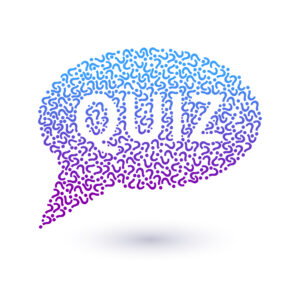
Exploration of personal energies often leads to intriguing insights about our inner selves. Various shades can embody emotions, characteristics, and even spiritual inclinations. Unearthing these unique shades allows for deeper self-awareness and understanding of individual vibrations.
In this captivating journey, one might find connections between hues and their meanings, revealing the underlying messages and traits that shape one’s personality. Each shade holds its own significance, illuminating aspects of individuality that may have previously gone unnoticed.
Engaging with this concept can transform how you perceive yourself and others, offering a vibrant lens through which to view the world. By tapping into these represented shades, one may cultivate a richer, more meaningful existence, enhancing both personal growth and relational dynamics.
Understanding Auras and Their Significance
Auras are believed to be subtle energy fields surrounding individuals, often reflecting their emotional, spiritual, and physical states. These luminescent layers can convey valuable insights about a person’s character, experiences, and overall well-being. Exploring the concept of energetic fields can enhance self-awareness and facilitate personal growth.
The Nature of Energy Fields
Every living being emits a unique vibration, which can manifest visually or intuitively as a radiant glow. This phenomenon is considered a manifestation of one’s spiritual essence, influenced by thoughts, feelings, and interactions with the surrounding environment. Learning to interpret these vibrant signatures offers a profound perspective on personal connections and emotional health.
Importance of Understanding Energetic Signatures
By recognizing specific attributes associated with distinct hues, individuals may gain clarity regarding their emotional states and those of others. This knowledge fosters empathy, encouraging deeper connections and harmonious relationships. Embracing this awareness can promote healing and balance, both personally and collectively.
How to Determine Your Aura Color
Identifying one’s energetic field can be a fascinating journey into self-awareness. Various methods exist to unveil this vibrant manifestation surrounding each individual. Engaging with these techniques helps shed light on personal attributes and emotional states, enriching one’s understanding of personal dynamics.
Here are some approaches to ascertain the hue of your energetic field:
- Meditation: Sitting in a quiet space and focusing on breathing can open pathways to deeper insights. Visualizing surrounding colors while in a meditative state may reveal the essence of your energy.
- Observation: Pay attention to changes in colors when feeling different emotions or during particular situations. Keeping a journal can help track these observations over time.
- Photography: Some techniques utilize cameras to capture energetic fields. Experimenting with these can provide visual representations of colors.
- Professional Readings: Seeking guidance from experts who specialize in energy readings can offer valuable perspectives on your vibrant essence.
Exploring these methods can unveil profound insights into oneself, enhancing personal growth and fostering a deeper connection to oneself and the world around.
The Psychology Behind Aura Colors
Understanding nuances of hues perceived around individuals can unveil deeper psychological insights. Each shade resonates with specific emotions, traits, or states of mind, reflecting our inner selves and influencing how we interact with others. These radiations can serve as a form of non-verbal communication, offering clues into personality and emotional well-being.
Research indicates that colors evoke distinct feelings, shaping perceptions and behaviors. For instance, warm tones like red and orange often symbolize passion and energy, while cooler shades such as blue and green are frequently associated with calmness and tranquility. This interplay suggests that colors not only reflect one’s mood but also affect interactions and relationships.
Moreover, cultural backgrounds can influence interpretations of various hues. Certain colors may carry different meanings or connotations depending on societal norms and personal experiences. Thus, understanding these associations can help individuals gain insight into their emotional health and foster personal growth.
Ultimately, exploring this spectrum can be a valuable tool for self-discovery, guiding individuals toward awareness of their psychological states and promoting a harmonious balance in life.
Connecting Emotions to Your Aura
Emotional states profoundly influence personal energy fields, shaping characteristics that radiate outward and affect interactions. Understanding this connection offers valuable insights into how feelings manifest in surroundings, providing a pathway to self-awareness and growth.
Understanding Emotional Impact

Each emotion emits a unique vibration, creating a spectrum of energy that can be sensed by others. Positive emotions typically generate uplifting energy, while negative feelings may lead to discordant vibes. Recognizing these patterns enhances emotional intelligence, allowing for informed decisions about interactions and personal well-being.
Common Emotional States and Their Energetic Signatures
| Emotion | Energetic Effect |
|---|---|
| Joy | Creates warmth and openness; attracts positive experiences. |
| Fear | Generates a constrictive energy; may repel connections. |
| Anger | Produces a chaotic energy; often leads to confrontations. |
| Love | Radiates harmony and balance; fosters deep connections. |
| Sadness | Emits a heavy energy; can create barriers between individuals. |
By exploring the relationship between feelings and energy, individuals can learn to cultivate awareness of their emotional landscapes. This understanding empowers personal development and encourages meaningful interactions with others, ultimately leading to holistic growth.
Healing with Your Aura’s Color
Engaging with the vibrant energies surrounding individuals can lead to profound restoration and peace. Each hue conveys unique frequencies that resonate with different aspects of our well-being. Understanding these associations offers a pathway to harnessing their healing properties effectively.
When exploring healing modalities linked to specific hues, it is essential to recognize the impact on emotional, mental, and physical states. The following table outlines various shades along with their common attributes for holistic healing:
| Shade | Healing Properties |
|---|---|
| Red | Energy, vitality, and physical strength |
| Orange | Creativity, joy, and emotional balance |
| Yellow | Intellect, clarity, and confidence |
| Green | Harmony, growth, and abundance |
| Blue | Calmness, communication, and truth |
| Purple | Spirituality, intuition, and wisdom |
| Pink | Love, compassion, and empathy |
Integrating these energies into daily practices–be it through meditation, visualization, or even fashion choices–can significantly enhance well-being. By aligning with specific vibrations, individuals often find greater harmony and balance in their lives.
Exploring Aura Colors in Cultures

Various societies throughout history have attributed special significance to radiant energies surrounding individuals. These interpretations often reflect deep-rooted beliefs, spiritual perspectives, and cultural narratives. In many traditions, specific hues are linked to distinct characteristics, emotions, or spiritual states, allowing for richer insights into personal and collective experiences.
In Eastern philosophies, for instance, colors are frequently seen as manifestations of life’s energy flow. Ancient texts often describe specific shades as indicative of physical and emotional health, as well as spiritual vitality. In these cultures, practitioners may use color meditations to enhance well-being and achieve balance.
Likewise, in Western metaphysical circles, the association between shades and personality traits has gained popularity. Here, individuals may consult systems that link varied tints to aspects such as creativity, intuition, and emotional resilience, fostering a deeper understanding of oneself and connections with others.
Indigenous cultures also embrace unique interpretations of glowing energies. Their perspectives often intertwine with nature, viewing hues as representations of elements or ancestral spirits. In these contexts, vibrant tones symbolize not only personal traits but also a broader connection to the universe and its cycles.
Overall, the exploration of radiant energies across different cultures reveals a rich tapestry of meanings, beliefs, and practices that contribute to a deeper appreciation of human experiences and expressions.
Q&A:
What is an aura, and how can I discover the color that represents mine?
An aura is described as a subtle energy field surrounding every living being, often reflecting their emotional, spiritual, and physical state. To discover the color that represents your aura, you can start with intuitive self-reflection. Pay attention to your feelings and experiences in different situations; these can give clues about your emotional state. Alternatively, you might consider alternative practices like meditation, aura photography, or consulting with a professional clairvoyant who can sense and interpret auras. Each of these methods can help you gain insight into the dominant color of your aura and its significance.
What does it mean if my aura color is predominantly blue?
A predominantly blue aura is often associated with qualities like peace, tranquility, and communication. Individuals with this aura color are typically viewed as calm and trustworthy, demonstrating strong interpersonal skills. They often have a deep connection with their emotions and can express themselves eloquently. On a deeper level, a blue aura might also indicate a person who seeks truth and wisdom, emphasizing a desire for self-improvement and understanding of the world. If you’re drawn to blue, it’s a sign that you might be seeking harmony and a more profound emotional connection with others.
Can my aura color change over time, and what factors influence this change?
Yes, an aura’s colors can change over time, reflecting your current emotional state, life experiences, and personal growth. Factors such as stress levels, mental well-being, and even changes in your environment can influence the color of your aura. For instance, during times of intense happiness or success, you may notice a brighter, more vibrant color, whereas periods of sadness or turmoil might result in darker shades. By focusing on self-care practices, such as meditation, journaling, or engaging in creative activities, you can positively influence your aura and promote a healthier emotional state.
How does knowing my aura color help me in my daily life?
Understanding your aura color can provide significant insight into your personality and emotional state, helping you navigate daily challenges and interactions more effectively. For instance, if you discover your aura is predominantly yellow, a color associated with optimism and creativity, you might focus on nurturing those aspects in your work or personal life. It can guide you in making decisions that align with your true self and help identify areas for personal growth. Additionally, being aware of your aura can enhance your relationships, as it can encourage you to communicate your feelings more openly and authentically, fostering deeper connections with others.
Are there specific meditation techniques I can use to enhance my understanding of my aura’s color?
Yes! There are several meditation techniques designed to enhance your understanding of your aura and its color. One effective approach is visualization meditation, where you sit quietly and envision a bright light surrounding you. As you meditate, focus on the color of the light and observe any feelings or thoughts that arise. Another method involves breath awareness; as you breathe deeply, release any tension or negativity, inviting positive energy associated with your desired aura color into your space. You can also incorporate chakra meditation, focusing on the different energy centers of your body and visualizing the colors associated with each chakra, which can provide insights into your overall aura composition. Regular practice can deepen your awareness of your aura and its changes.


